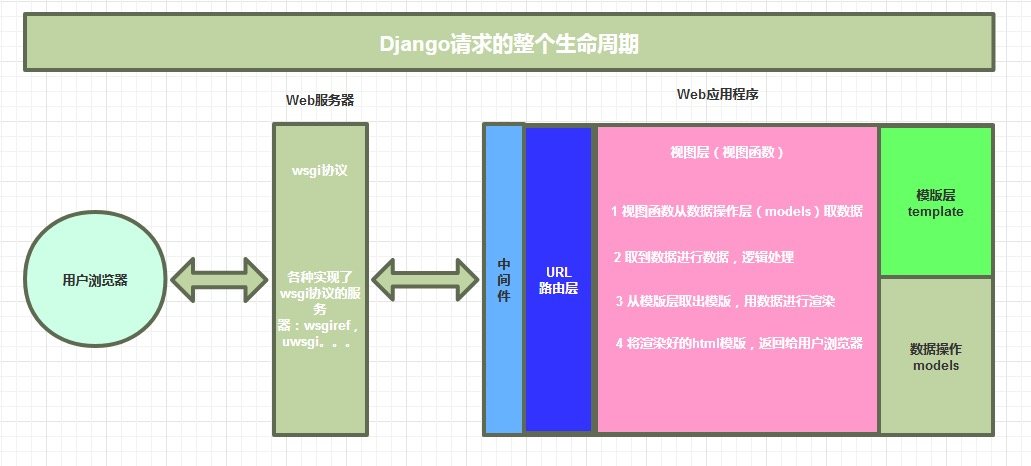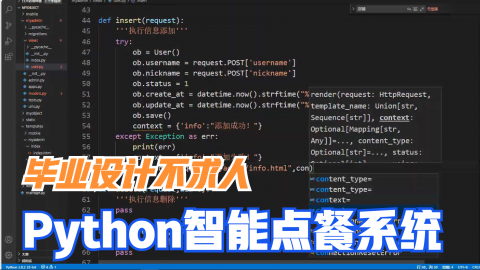Django 系列博客(三)
前言
本篇博客介绍 django 的前后端交互及如何处理 get 请求和 post 请求。
get 请求
get请求是单纯的请求一个页面资源,一般不建议进行账号信息的传输。
配置路由
from django.conf.urls import url
from django.contrib import admin
import app.views as app_views
import newApp.views as new_views
urlpatterns = [
url(r'^admin/', admin.site.urls),
url(r'^$', app_views.home),
# 路由采用正则匹配, ^以什么开头 $以什么结果
# 注: 当路由没有子路由是,才在末尾添加$
url(r'^index/$', app_views.index),
url(r'login', app_views.login_action),
url(r'^new/index/$', new_views.index)
]配置视图
from django.shortcuts import render, redirect
from django.http import HttpResponse
# Create your views here.
# 每一个请求,都对应一个视图响应函数,来出现请求,完成响应
# def index(abc):
# return HttpResponse('hello django') # 第一个响应
import django.core.handlers.wsgi
def login_action(request):
return render(request, 'login.html') # 第一个响应页面
# def home(request):
# return redirect('/index/') # 第一个重定向
def home(request):
return render(request, 'index.html')
def index(request):
return redirect('/')配置页面资源
<!DOCTYPE html>
<html>
<head>
<meta charset="UTF-8">
<title>主页</title>
</head>
<body>
<h1 style="text-align: center">app的主页</h1>
</body>
</html><!DOCTYPE html>
<html>
<head>
<meta charset="UTF-8">
<title>登录</title>
</head>
<body>
<h1 style="color: red">登录</h1>
</body>
</html>post 请求
配置路由
from django.conf.urls import url
from django.contrib import admin
from app import views
urlpatterns = [
url(r'^admin/', admin.site.urls),
url(r'^$', views.home),
url(r'^index/$', views.index),
url(r'^login/$', views.login, name='lg'),
]配置视图
from django.shortcuts import render, redirect
import pymysql
# Create your views here.
def home(request):
return render(request, 'index.html')
def index(request):
return redirect('/')
'''
def login(request):
print(request.method)
# 如果获取GET请求的提交数据
# import django.core.handlers.wsgi
# print(type(request))
# import django.http.request.QueryDict
# print(type(request.GET))
print(request.GET)
# usr = request.GET['usr'] # 不安全
usr = request.GET.get('usr', 'USR') # 安全, 第一个参数为数据的key, 第二个参数为默认值
print(usr)
pwd = request.GET.get('pwd') # 不设默认值,没有取到值时,返回值为None
print(pwd)
return render(request, 'login.html')
'''
from django.http import HttpResponse
def login(request):
if request.method == 'GET':
stus = request.GET.getlist('stu')
print(stus)
return render(request, 'login.html')
# 没有GET分支, 发来的请求为POST
usr = request.POST.get('usr')
pwd = request.POST.get('pwd')
print(usr, pwd)
# 连接数据库 => ORM
conn = pymysql.connect(host='localhost', port=3306, user='root', password='root', db='django')
cur = conn.cursor(pymysql.cursors.DictCursor)
# cur.execute('select * from user')
# users = cur.fetchall()
cur.execute('select * from user where usr=%s and pwd=%s', [usr, pwd])
res = cur.fetchone()
print(res)
if res != None:
return HttpResponse('登录成功')
return HttpResponse('登录失败')配置页面资源
<!DOCTYPE html>
<html>
<head>
<meta charset="UTF-8">
<title>主页</title>
{# <link rel="stylesheet" href="./index.css">#}
{# <link rel="stylesheet" href="/static/index.css">#}
{# <link rel="stylesheet" href="/static/temp.css">#}
{# <link rel="stylesheet" href="/ooo/index.css">#}
{# <link rel="stylesheet" href="/ooo/temp.css">#}
{# <link rel="stylesheet" href="/static/css/test.css">#}
<link rel="stylesheet" href="/static/css/index.css">
</head>
<body>
<h1 style="text-align: center">主页</h1>
<img src="/static/img/001.png" alt="">
</body>
</html><!DOCTYPE html>
<html>
<head>
<meta charset="UTF-8">
<title>登录</title>
<link rel="stylesheet" href="/static/bootstrap-3.3.7-dist/css/bootstrap.css">
<style>
.box {
border: 1px solid #ccc;
padding: 20px;
border-radius: 20px;
height: 380px;
}
</style>
</head>
<body>
{#<button class="btn btn-warning"> 按钮</button>#}
{#<div class="btn-group">#}
{# <button class="btn btn-default btn-lg dropdown-toggle" type="button" data-toggle="dropdown" aria-haspopup="true"#}
{# aria-expanded="false">#}
{# Large button <span class="caret"></span>#}
{# </button>#}
{# <ul class="dropdown-menu">#}
{# <li><a href="#">Action</a></li>#}
{# <li><a href="#">Another action</a></li>#}
{# <li><a href="#">Something else here</a></li>#}
{# <li role="separator" class="divider"></li>#}
{# <li><a href="#">Separated link</a></li>#}
{# </ul>#}
{#</div>#}
<div class="container">
<div class="box row col-sm-6 col-sm-offset-3">
{# action: 没写 | http://localhost:8801/login | /login/ | {% url 'url_name' %} #}
<form action="{% url 'lg' %}" method="GET">
{# {% csrf_token %}#}
<div class="form-group">
<label for="usr">用户名:</label>
<input type="text" class="form-control" name="usr" id="usr" placeholder="请输入用户名">
</div>
<div class="form-group">
<label for="pwd">Password</label>
<input type="password" class="form-control" name="pwd" id="pwd" placeholder="请输入密码">
</div>
<div class="checkbox">
<label>
<input name="stu" type="checkbox" value="stu1"> 学生1
</label>
<label>
<input name="stu" type="checkbox" value="stu2"> 学生2
</label>
<label>
<input name="stu" type="checkbox" value="stu3"> 学生3
</label>
</div>
<button type="submit" class="btn btn-info pull-right">登录</button>
</form>
</div>
</div>
{#<a href="/index/">前往主页</a>#}
</body>
<script src="/static/bootstrap-3.3.7-dist/js/jquery-3.3.1.js"></script>
<script src="/static/bootstrap-3.3.7-dist/js/bootstrap.js"></script>
</html>前后端交互
Django请求生命周期

内容来源于网络如有侵权请私信删除
- 还没有人评论,欢迎说说您的想法!





 客服
客服


